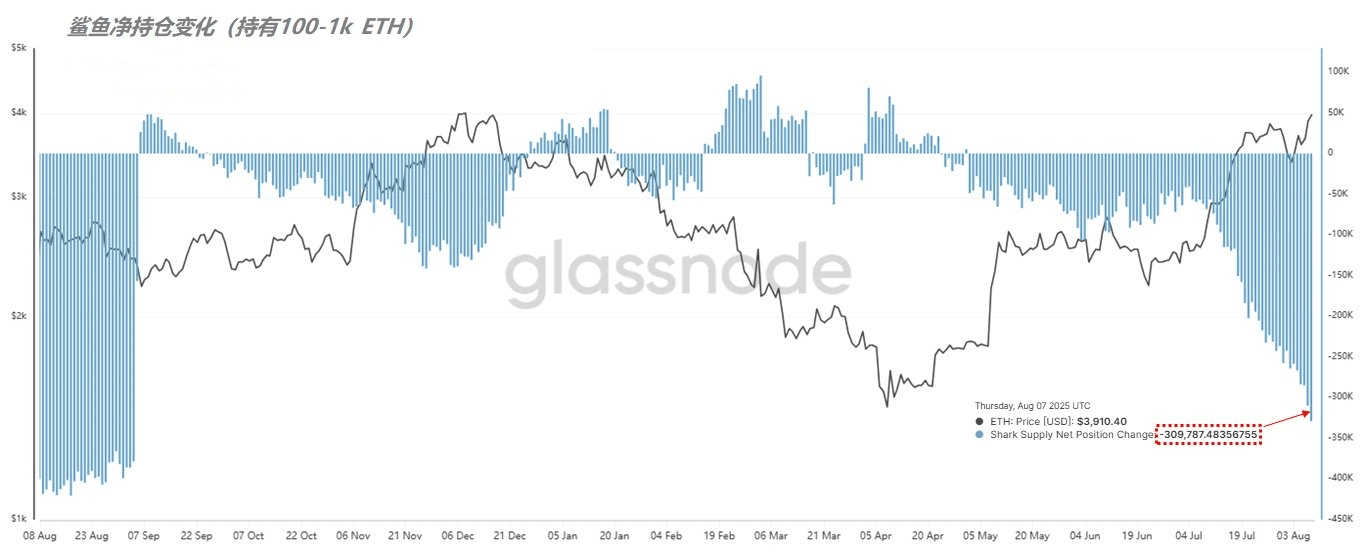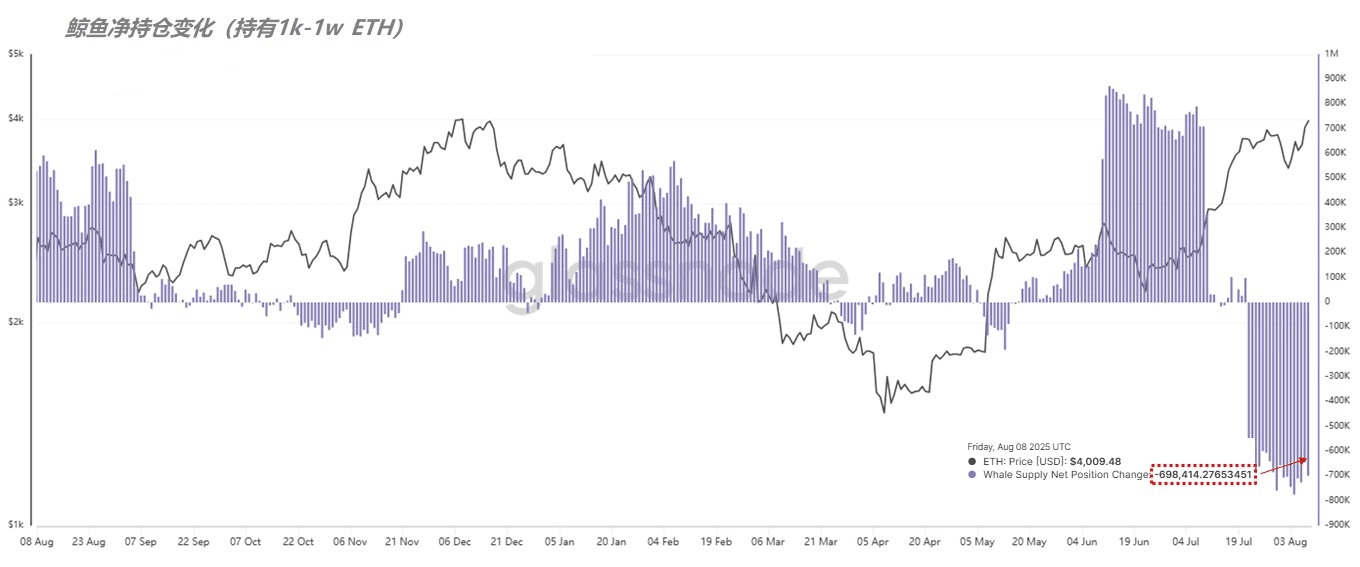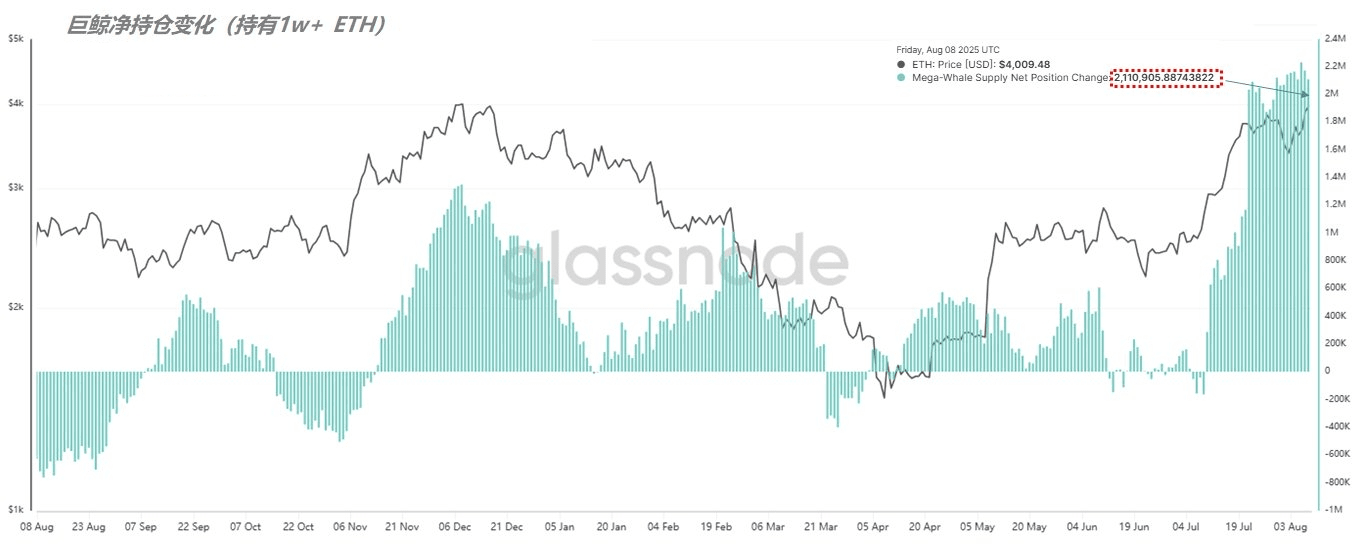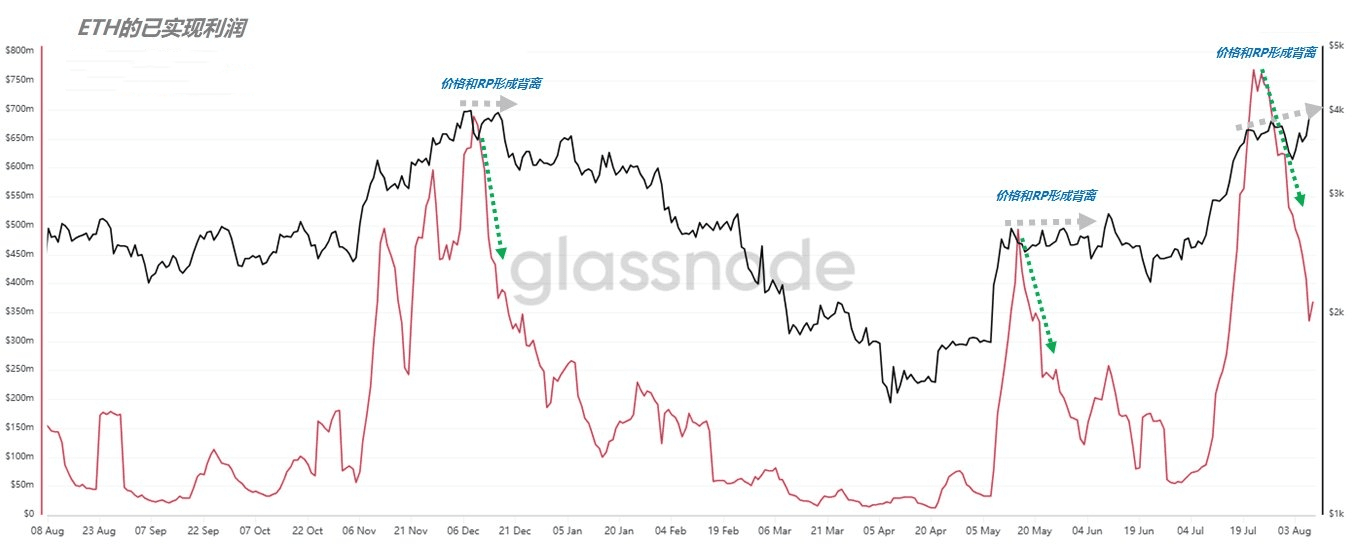Recently, changes in Ethereum's chip structure have attracted market attention. Comprehensive on-chain data indicates that the distribution of ETH holdings is moving towards 'centralization', with a large amount of chips flowing from small and medium holders into whale wallets.
Data from the past month reveals three significant characteristics:
Medium-sized holding group (100-1,000 ETH) reduced their holdings by approximately 309,000 ETH;

(Figure 1)
Large holding group (1,000-10,000 ETH) reduced their holdings by approximately 698,000 ETH;

(Figure 2)
Ultra-large holding group (over 10,000 ETH) has counter-cyclical accumulation of 2.1 million ETH, almost entirely absorbing the sell-off from the previous two groups and attracting more scattered funds.

(Figure 3)
This trend aligns with previous key technical analysis. The resistance at $2,800 for ETH originates from some large accounts that entered at $3,600 earlier this year, continuously averaging down their costs to this range, forming a solid area of concentrated chips. A breakthrough at this price level would mean further locking in liquidity and significantly reducing upper resistance.
As of now, the accumulation of chips between $2,500 and $2,800 remains solid, showing no significant signs of reduction. This supports medium- to long-term growth against the backdrop of continuous inflow of traditional capital and large whales increasing their positions.

(Figure 4)
However, short-term signals are not entirely optimistic. The price curve shows a significant divergence from realized profit (RP), indicating a decrease in the participation of long-term chips with high profits, and the market is increasingly driven by short-term funds. Additionally, open interest (OI) has reached a new high for this phase, which also indicates that the short-term battle between bulls and bears is intensifying.

(Figure 5)
Overall, Ethereum's long-term structure remains positive, but for players who have not positioned at low levels, caution is advised for short-term chasing.

